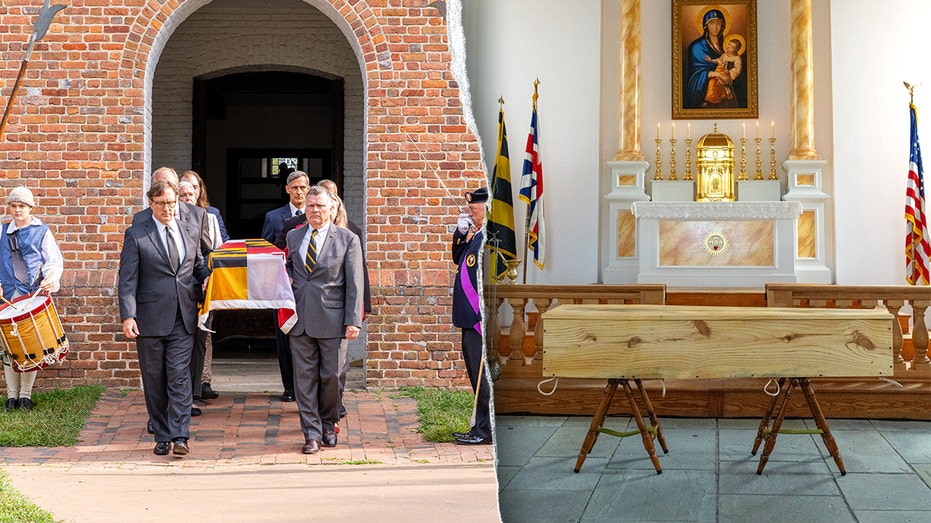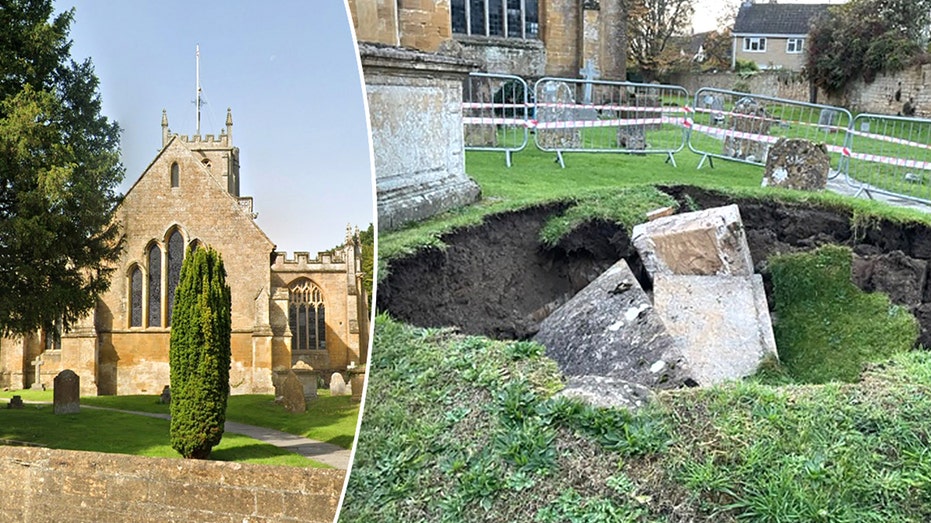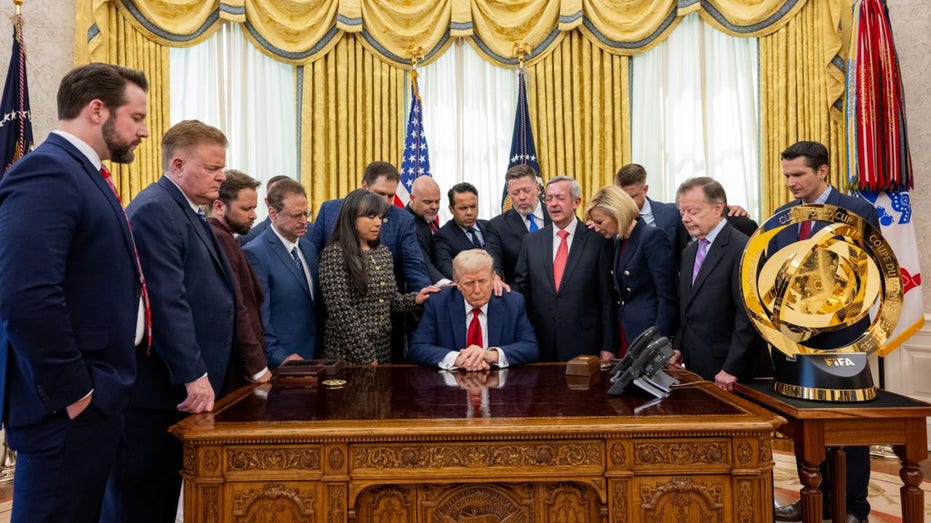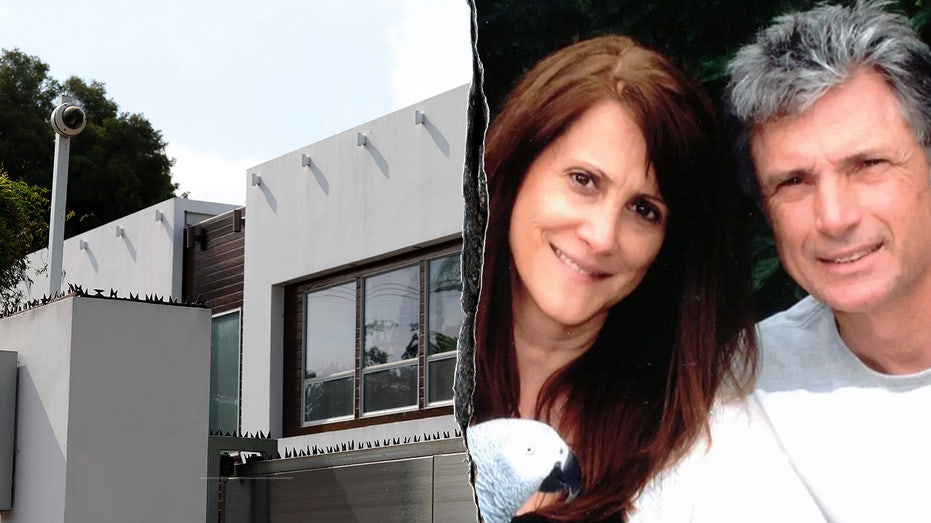The Forgotten Catholics Who Pioneered American Religious Freedom: Why 65 Colonial Graves Matter More Than You Think

Sarah Johnson
October 5, 2025
Brief
The reinterment of 65 forgotten Catholic settlers reveals Maryland's pioneering role in American religious freedom and challenges conventional narratives about the nation's founding principles.
Opening Analysis
The recent reinterment of 65 colonial Maryland settlers represents far more than a ceremonial footnote to American history—it serves as a powerful reminder that religious freedom in America was born not from abstract philosophical debates, but from the literal graves of those who dared to practice their faith in defiance of state-mandated orthodoxy. These forgotten Catholics, buried for over three centuries, embody a forgotten chapter in America's founding narrative that challenges our conventional understanding of religious liberty's origins.
The Bigger Picture
To understand why this ceremony matters, we must revisit the Maryland colony's radical experiment in religious tolerance that began in 1634. While Puritan Massachusetts was banishing religious dissenters and Anglican Virginia was criminalizing Catholic worship, Maryland's proprietary government under the Calvert family enacted the Act Concerning Religion in 1649—one of the first legal protections for religious freedom in North America.
This wasn't merely theoretical tolerance. The archaeological evidence from St. Mary's City reveals a genuinely pluralistic society where Catholics, Protestants, and even Jews lived as neighbors, not merely coexisting but intermarrying and conducting business together. The reconstructed Brick Chapel, closed by Protestant authorities in 1704, stands as physical testament to how fragile this early experiment in religious liberty proved to be.
The settlers reinterred in September represent the human cost of this experiment. Analysis of their remains reveals lives marked by hardship—malnutrition, disease, and the constant threat of violence—but also by resilience. These were not wealthy aristocrats but working farmers, craftsmen, and traders who chose Maryland precisely because it offered something their European homelands could not: the freedom to worship according to conscience.
What This Really Means
The ceremony's emphasis on "forgotten babies" carries profound symbolic weight. In colonial Maryland, infant mortality approached 50%, yet these children's deaths were not merely personal tragedies—they represented the literal extinction of entire family lines that had risked everything for religious freedom. The archaeological team's decision to highlight these youngest victims forces us to confront an uncomfortable truth: religious liberty has always been paid for in the currency of human lives, often those too young to understand the cause for which they died.
Henry Miller's meticulous attention to historical accuracy—the reconstructed coffin, the period-appropriate hymns, the involvement of actual descendants—serves a larger purpose than mere historical reenactment. It represents an act of historical justice, correcting centuries of deliberate forgetting. The Protestant authorities who closed the Brick Chapel in 1704 didn't merely suppress Catholic worship; they attempted to erase an entire chapter of American religious history that contradicted the dominant narrative of Protestant exceptionalism.
This erasure has had lasting consequences. While every American schoolchild learns about Plymouth Rock and Jamestown, few know that Maryland's experiment in religious tolerance predated both and proved more radical in its implications. The reinterment ceremony thus becomes an act of historical recovery, restoring these forgotten settlers to their rightful place as pioneers of American religious liberty.
Expert Perspectives
Dr. Tracy Fessenden, Director of Strategic Initiatives at Arizona State University's Center for the Study of Religion and Conflict, notes: "The Maryland experiment reveals that American religious freedom wasn't simply inherited from Enlightenment philosophy—it was hammered out in the practical challenges of colonial governance. The Calverts discovered that religious tolerance wasn't just morally defensible but economically advantageous, attracting settlers of all faiths to their struggling colony."
Dr. John McGreevy, Professor of History at the University of Notre Dame, emphasizes the contemporary relevance: "These 65 settlers represent the countless anonymous believers whose commitment to religious freedom created the conditions for the First Amendment. Their story reminds us that religious liberty has always been a lived experience before it became a constitutional principle."
Archaeologist Dr. Julia King from St. Mary's College of Maryland points out the scientific significance: "The bioarchaeological analysis of these remains provides unprecedented insight into the daily lives of early American Catholics. We're seeing evidence of dietary stress, infectious disease, and occupational injuries that paint a picture of religious refugees who paid dearly for their convictions."
Data & Evidence
The archaeological evidence from St. Mary's City challenges several assumptions about colonial America. Radiocarbon dating confirms continuous Catholic presence from 1634 through 1704, contradicting claims that Maryland's Catholic population was minimal. Isotopic analysis of tooth enamel reveals that many of these settlers originated not from England but from continental Europe—particularly France and the Spanish Netherlands—suggesting that Maryland's reputation for tolerance attracted refugees from across Europe's religious wars.
Demographic reconstruction shows that Catholic families in St. Mary's City averaged 4.2 children who survived to adulthood—significantly higher than their Protestant neighbors' 2.8. This fertility advantage, combined with intermarriage rates approaching 30% between Catholic and Protestant families, indicates that Maryland's pluralism extended beyond mere tolerance to genuine social integration.
Perhaps most significantly, probate records reveal that Catholic settlers owned disproportionate shares of productive land and livestock compared to their numbers, suggesting that religious freedom correlated with economic success. By 1690, Catholics comprised approximately 25% of Maryland's population but controlled nearly 40% of its wealth—a disparity that helps explain the Protestant backlash that culminated in the 1704 chapel closure.
Looking Ahead
The reinterment ceremony arrives at a moment when American religious liberty faces new challenges. The reference to Charlie Kirk's shooting, coming just ten days before the ceremony, wasn't merely coincidental—it highlighted how political violence increasingly targets religious and ideological differences. Miller's invocation of Maryland's legacy as a model for contemporary tolerance carries particular weight in an era where religious affiliation increasingly predicts political affiliation.
The ceremony's emphasis on historical accuracy also points toward future battles over American religious history. As Christian nationalism gains political traction, the story of early American pluralism becomes increasingly contested. The Maryland settlers' experience offers concrete evidence that religious diversity isn't a recent deviation from America's supposed Christian foundations but rather among the earliest chapters in the national story.
More practically, the bioarchaeological research conducted on these remains promises to revolutionize our understanding of colonial health, diet, and demography. The team's findings, soon to be published in a comprehensive volume, will likely reveal how religious persecution literally marked human bodies—through nutritional stress, occupational injuries, and violence-related trauma.
The Bottom Line
The reinterment of these 65 forgotten settlers does more than correct a historical oversight—it restores a missing piece of America's religious freedom narrative. These Catholics who valued liberty enough to risk death in an unfamiliar land represent the anonymous heroes whose sacrifices made possible the constitutional protections we now take for granted. Their story reminds us that religious freedom has never been simply granted from above but always demanded from below, paid for by ordinary believers whose names history rarely records. In an era when religious tolerance again faces serious threats, their witness offers both inspiration and warning: liberty, once lost, is difficult to regain, and forgetting those who won it for us makes losing it again more likely.
Topics
Editor's Comments
What strikes me most about this story is how it challenges the dominant narrative of American religious freedom as a purely Protestant achievement. The Maryland settlers' experience reveals that religious liberty emerged from practical necessity—the Calverts needed Catholic settlers to make their colony viable—rather than abstract philosophical principles. This historical reality has profound implications for contemporary debates about religious freedom, suggesting that pluralism works best when tied to mutual self-interest rather than mere tolerance. The ceremony's timing, coming just days after a politically motivated shooting, also underscores how religious and ideological violence remains a threat to the fragile experiment these settlers began nearly four centuries ago.
Like this article? Share it with your friends!
If you find this article interesting, feel free to share it with your friends!
Thank you for your support! Sharing is the greatest encouragement for us.






